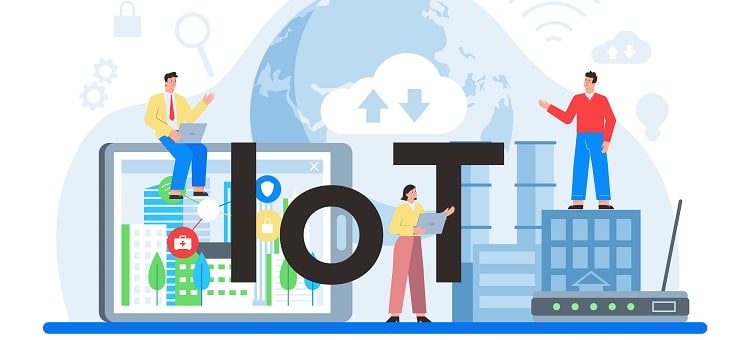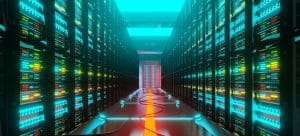IoT (Internet of Things) can be defined as the technology that connects devices or rather “things” to the internet. These things can be air conditioners, headphones, refrigerators, washing machines, smartphones, cars, televisions, and almost everything else we use in our day-to-day lives at home and in the office.
The adoption of these devices has been boosted by IT service desk outsourcing. As a small business or an enterprise decision maker, you do not have to employ experts to provide solutions whenever you have issues with your IoT devices. Instead, you can rely on outsourced help desk services, which are more convenient and come with a flat and simple pricing structure.
IoT devices come with a circuit board that has sensors used for connecting them to the internet. Some good examples of IoT devices might include fire detection sensors, elevator accelerometers, humidity and temperature sensors, and pressure sensors, among others.
You can also find IoT services in big machines such as jet engines, meaning that they can be used anywhere and in different projects. However, the most exciting and in-demand IoT projects include self-driving cars, smart retail, smart infrastructure, smart buildings, smart homes, and smart factories, among others.
IoT Platforms
However, for these projects to work and meet their requirements, they need an outstanding IoT platform. There are several platforms available in the market today, making it difficult for developers to choose the best platform for their IoT services. This IoT platforms comparison is going to make things easier for developers when choosing the platform to use.
Some of the most popular IoT platforms in use today include Amazon Web Services, Microsoft Azure, IBM Watson IoT Cloud, Google IoT Cloud Platform, and Cisco IoT Cloud Connect. Others such as Bosch, Salesforce IoT, Oracle IoT, General Electric’s Predix, and SAP are also growing in popularity.
Which Platform is Best for IoT?
To understand the best platform for the Internet of Things, we are going to come up with an IoT platforms comparison, looking at the different services and features provided by:
1. Amazon Web Services (AWS)
AWS has the largest number of services compared to other IoT platforms. It is, however, the most expensive of all the platforms in our IoT platforms comparison. AWS provides IoT services for both the cloud and edge software.
With edge software, developers are able to collect data, connect devices, and make the right decisions with their applications even when they do not have an internet connection.
On the other hand, they can securely connect different devices or a group of devices, make sure that they are secure and healthy, and detect and respond to any action or alert raised by other Internet of Things (IoT) sensors and applications.
The edge software solutions provided by AWS include;
- Amazon FreeRTOS: This is an operating system provided by AWS and used by microcontrollers. It is used primarily for making low-power and small edge devices easy to use, program, connect, secure, deploy, and manage. It integrates different software libraries with the FreeRTOS kernel – this is one of the most popular open-source OS used for microcontrollers. With Amazon FreeRTOS, developers can connect small devices to the AWS cloud services.
- AWS IoT edge software: You cannot have an IoT platform comparison without talking about AWS IoT edge software due to its ability to bring computing power closer to the data generation source. It makes it possible for applications to eliminate over-reliance on a centralized cloud when it comes to data processing.
- AWS IoT Greengrass: This solution plays a crucial role when it comes to ensuring that devices use the data they generate locally while at the same time relying on the cloud for services such as analytics, management, and storage.
The cloud services for IoT provided by AWS include;
- AWS IoT Core: This is a managed cloud service whose responsibility is to allow connected devices to interact with other devices as well as cloud applications securely. It can support many devices at the same time and route messages to endpoints securely and reliably.
- AWS IoT Device Defender: This is also a managed service that is used for securing IoT devices. Its main purpose is to audit all IoT configurations to ensure that they abide by IoT security practices.
- AWS IoT Device Management: This service is used for remotely managing, monitoring, and organizing IoT devices. Developers have the option to either register devices in bulk or individually and manage all permissions to ensure that the devices are secure all the time.
- AWS IoT Analytics: Just like the others above, the AWS IoT Analytics service is fully managed and is used for analyzing large volumes of data from IoT devices. With this service, developers do not have to worry about making the right decisions for their IoT applications as well as machine learning.
- AWS Partner Device Catalog: Developers can use this service to find hardware and other devices that help them build, explore, and get their IoT solutions to the market.
- AWS IoT SiteWise: This is a managed service used for organizing and collecting data from large industrial devices and equipment.
- AWS IoT Things Graph: This is a service used for connecting web services and devices visually when building IoT applications.
- AWS IoT Events: This service is used to help developers detect events generated by IoT applications and sensors and then respond to them.
Looking at the IoT platforms comparison in this article, you will realize that AWS provides the highest number of services. It is also one of the best platforms for developers who do not mind its cost.
2. Microsoft Azure
Microsoft Azure IoT platform is composed of multiple cloud services used for connecting, monitoring, and controlling IoT devices and other assets. It is managed by Microsoft. It makes it to our IoT platforms comparison article because it is the second-largest platform after AWS. It is also cheaper than Google and AWS.
Microsoft Azure IoT solution is composed of IoT devices and back-end services that run in the cloud and communicate with each other. Developers get two options to build their solutions. These include PaaS (Platform as a Service) and SaaS (Software as a Service).
The SaaS solutions provided by Microsoft Azure include;
- Azure IoT Cloud Services: Azure provides developers with Azure IoT Cloud Services to connect their devices to the cloud and analyze data from their IoT devices.
- Azure IoT Central: This solution helps developers connect, manage, and monitor their IoT devices. They even get the option to choose a device type template and then test a basic IoT application for the operators of the device. This solution also allows developers to provision new devices. They can track its performance with SolarWinds. You do not require programming knowledge to use this service, something that has made it very popular.
- IoT Hub Device Provisioning Service: This works like a helper for the IoT Hub discussed below. It helps developers securely provision their devices to the Hub. They can even provision multiple devices at the same time instead of doing it individually.
- IoT Hub: Using this service, developers can connect different IoT devices with an IoT hub. The hub controls and monitors a large number of IoT devices. It also plays a crucial role when it comes to the bi-directional communication between the back-end and IoT devices.
- Azure Maps: Developers looking for geographic information for their mobile and web applications can use the Azure Maps service. It uses a set of APIs to create applications that run well on both mobile and desktop applications.
- Time Series Insights: This is a service used for visualizing, storing, and querying data that is collected or generated by IoT devices.
- IoT Edge: Working together with the IoT Hub, this service is used for analyzing data directly on the IoT devices instead of doing it in the cloud.
The PaaS solutions from Azure include;
- Azure Digital Twins: With this service, developers can create models that look like the physical environment. They can model the interactions and relationships between devices, spaces, and even people.
- Azure IoT Solutions Accelerators: This is composed of a number of PaaS solutions used for accelerating the development of IoT solutions. Developers can customize the provided IoT solution to match their requirements. This requires JavaScript and .NET skills to customize the visualization and back-end respectively.
3. IBM Watson IoT Cloud
When it comes to IoT platforms comparison, IBM is known best for its support for industrial IoT solutions. This is the main reason why IBM is among the top five IoT platforms we have today. Its platform is known as the IBM Watson IoT platform.
The platform comes as a managed service that is hosted in the cloud to ensure that there is secure management, connection, and processing of data collected by IoT devices.
Together with the power brought by IoT, the IBM Watson IoT platform leverages other technologies such as blockchain, APIs (Applications Programming Interfaces), and artificial intelligence to ensure that enterprises can collect data from machines, equipment, and other devices and implement secure API test cases. This data can be used to gain insights into operations for better decision-making.
The service is built on the IBM cloud to make sure that it is scalable enough to adapt to changing business needs and allow them to expand without any problems. To ensure that there is instant processing of data collected from IoT devices, this service uses artificial intelligence for data analytics. This makes it easy for enterprises to get valuable insights from the data.
This platform is popular among companies, especially those manufacturing machines, appliances, and home devices. You will also find this solution in home appliances such as ovens, dishwashers, and washing machines.
IBM Watson IoT Cloud’s solutions include;
- IBM IoT Blockchain Service: This service is tasked with making sure that IoT devices and IoT, in general, integrate well with all business services in an immutable and shared ledger. With this service, IoT devices can send data and respond to events coming from business processes through a blockchain ledger. This ledger is shared by the business network. The Blockchain Service allows developers to provide analysis, improve visibility, and engage their users.
- IBM IoT Analytics Service: Again, IoT platforms comparison cannot lack analytics. This explains the reason why the top IoT platforms have an analytics service. This service allows developers to gain real-time data analytics with simplified data curation and ingestion. Developers can deploy this service in a hybrid environment, on-premise, or on the cloud.
- IBM IoT Connection Service: This solution works by integrating different services to make a multi-tenant, public SaaS solution.
4. Google IoT Cloud Platform
Google is one of the top and most successful tech companies in the world today. When it comes to IoT platforms comparison, Google stands tall with the number of services provided. The best IoT solution from Google is the Cloud IoT Core. It is used to create innovative and secure solutions. It is the second most expensive IoT platform after AWS.
Some of the best IoT solutions from Google IoT Cloud Platform include;
- Cloud IoT Core: This is a managed solution used for managing, connecting, and consuming data collected from different connected devices. Developers get a complete solution with Cloud IoT Core, where they can collect, analyze, process, and visualize data. This happens in real-time. The Cloud IoT Core solution is integrated with other services such as Google Cloud Data Analytics to make it easy for developers to use IoT data for things like machine learning, visualization, and advanced analytics. It also comes with a device manager (used for configuring and managing individual devices), a database performance monitoring tool, and a protocol bridge (used for providing connection endpoints with load balancing.
- Firebase: Firebase can be described as an IoT and mobile development platform. It supports messaging over XMPP and HTTP from cloud to device and device to cloud. Developers get SDKs for Android, JavaScript, C++, and iOS.
- Cloud IoT Edge: This is an IoT solution tasked with extending the machine learning and data processing capabilities of Google Cloud in edge devices such as robotic arms, oil rigs, and wind turbines, among others. With this solution, these devices can make decisions locally instead of relying on the cloud. It runs on Linux and Android operating systems.
- Cloud Pub/Sub: Every IoT platforms comparison needs to include an analytics program. Google Cloud provides the Cloud Pub/Sub for analyzing scenarios involving device-to-cloud connections. It works by ingesting event streams and then ensuring that they are delivered for processing. With the delivery of data being handled by Cloud Pub/Sub, developers can focus on other areas of their IoT applications. It comes with client libraries for Python, Ruby, PHP, Objective-C for iOS, JavaScript, .NET, Java for Android, and Go.
5. Cisco IoT Cloud Connect
Cisco is one of the best-performing companies when it comes to providing businesses with IT services. They promise to ensure that companies can seize the technology opportunities of tomorrow to expand and streamline their operations. Cisco believes that the cloud possesses all the opportunities that businesses need to expand.
Their IoT solutions are geared towards strengthening the relationship between customers and businesses. They also try to provide solutions that can help businesses make more money – a statement that you will rarely find with any other IoT platform. That is one of the reasons we cannot forget Cisco IoT Cloud Connect when talking about IoT platforms comparison.
The Cisco IoT Cloud Connect platform comes with several robust features that make it stand out from the rest. Some of these features include a centralized data management solution, edge computing, advanced security, and other industry cloud features. The platform is popular among developers working in the financial, predictive maintenance, healthcare, and home security industries.
Cisco is best known for its two solutions, namely IoT Control Center and the Kinetic IoT Operations Platform.
- IoT Control Center: The IoT Control Center services thousands of enterprise-grade customers and millions of mobile devices across the globe, making it the largest platform when it comes to cellular connectivity. It is also the best service provider when it comes to smart cars. This means that Cisco cannot be left behind when talking about IoT platforms comparison. Today, there are millions of devices being added to this service every day, especially because of its connectivity features such as 5G readiness, eSIM as a service, and machine learning.
- Kinetic IoT Operations Platform: This platform uses three components to connect different types of devices. It also manages data both in the cloud and at the network’s edge. Apart from this platform being fully compatible with the hardware from Cisco, it can also work with other products, as long as they are recommended by Cisco.
Summary
Even though the IoT platform comparison above mentions five platforms with all of them working well in different industries, each of the platforms does better in a particular industry or domain. For instance, the IBM Watson IoT Cloud works well for those running big enterprises with many sensors and complex infrastructure.
On the other hand, those who want an IoT solution for their smart homes will find Amazon Web Services as the best option for their requirements. It is also one of the best platforms for IoT startups.
Cisco, as discussed above, is the best option for cellular services as well as connected vehicles. Google is the best platform for IoT solutions in the transportation and energy sector while Microsoft Azure is the leader when it comes to solutions for the medical field.
IoT Software Development Companies
IoT platforms comparison provides you with enough knowledge to choose a platform that meets your requirements as well as those of your business.
However, this knowledge is just enough for you to ensure that you have chosen the best platform. What do you do when it comes to the actual development of your solutions?
Of course, you will need to work with experts in the industry. There are many IoT software development companies today, but you need to ensure that you are working with top companies.







